The Harmony
and Elegance
of BONSAI
Before bonsai became bonsai, the Japanese had already shaped their aesthetics and representation of nature for centuries. As early as the Nara era (710–794), court nobles and scholars were enthusiastic about creating miniature landscapes. It was during the Heian period (794–1185) that the idea that plants and trees cannot achieve true beauty and superiority without intervention by the human hand took hold and was distilled in the minds of literati and artists to shape Japanese aesthetics to this day. For a long time, bonsai remained a hobby confined to the nobility, the literati and the aesthetes; it was not until the 20th century that the art of bonsai spread into mainstream society. The beauty of a bonsai tree is based on many criteria: the shape of the tree, its colours, its container, i.e. its pot, the furniture on which it will be displayed, etc.
Bonsai is an art known and recognised throughout the world. However, the Hokuriku region has very few places where it is possible to meet bonsai masters. And yet there is a small shop in a charming traditional Japanese townhouse where, once the door is slid open, real works of art are displayed. We interviewed Mr Yoshikatsu Shimomura, a bonsai master who is keen to share his passion with as many people as possible, while also trying to overcome bonsai’s outdated image in Japan.
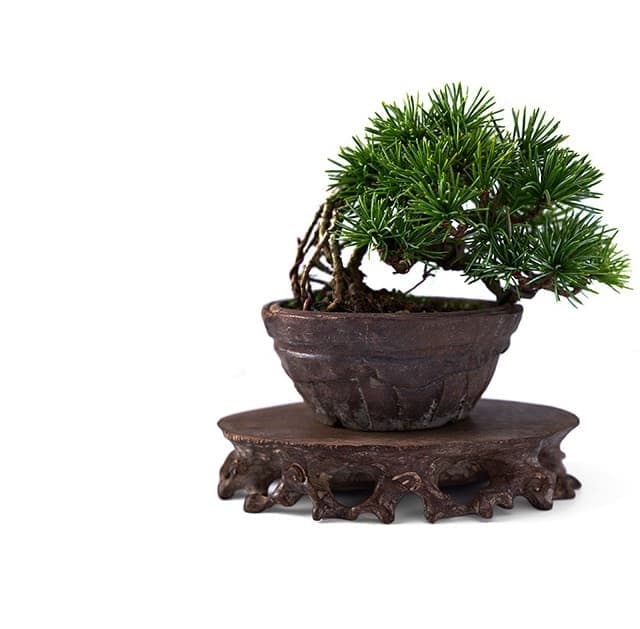
The Harmony
and Elegance of BONSAI
Before bonsai became bonsai, the Japanese had already shaped their aesthetics and representation of nature for centuries. As early as the Nara era (710–794), court nobles and scholars were enthusiastic about creating miniature landscapes. It was during the Heian period (794–1185) that the idea that plants and trees cannot achieve true beauty and superiority without intervention by the human hand took hold and was distilled in the minds of literati and artists to shape Japanese aesthetics to this day. For a long time, bonsai remained a hobby confined to the nobility, the literati and the aesthetes; it was not until the 20th century that the art of bonsai spread into mainstream society. The beauty of a bonsai tree is based on many criteria: the shape of the tree, its colours, its container, i.e. its pot, the furniture on which it will be displayed, etc.
Bonsai is an art known and recognised throughout the world. However, the Hokuriku region has very few places where it is possible to meet bonsai masters. And yet there is a small shop in a charming traditional Japanese townhouse where, once the door is slid open, real works of art are displayed. We interviewed Mr Yoshikatsu Shimomura, a bonsai master who is keen to share his passion with as many people as possible, while also trying to overcome bonsai’s outdated image in Japan.
1
Master Shimomura, can you please tell us how you developed your passion for bonsai and describe your career path?
Before working with bonsai I worked in a company for 14 years. However, in 2007, my father, who was managing a bonsai garden at the time, had a car accident, and I began helping him with his activities while looking for a new job. That’s how I started studying bonsai and the more I learned, the more passionate I became. It was clear that I had found my new job. Through contact with regular customers, older people, and also through my own research, I tried to improve and learn more and more.
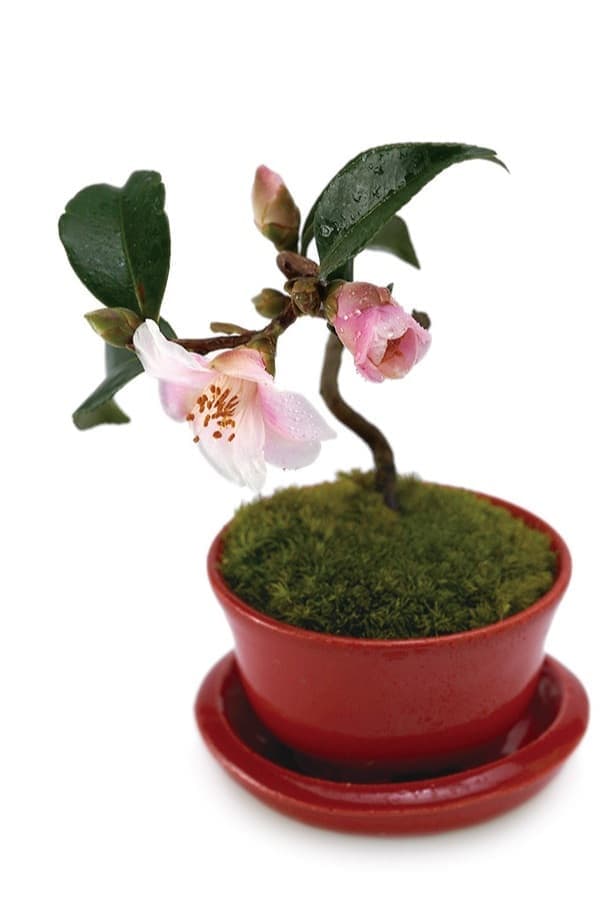
1
Master Shimomura, can you please tell us how you developed your passion for bonsai and describe your career path?
Before working with bonsai I worked in a company for 14 years. However, in 2007, my father, who was managing a bonsai garden at the time, had a car accident, and I began helping him with his activities while looking for a new job. That’s how I started studying bonsai and the more I learned, the more passionate I became. It was clear that I had found my new job. Through contact with regular customers, older people, and also through my own research, I tried to improve and learn more and more.
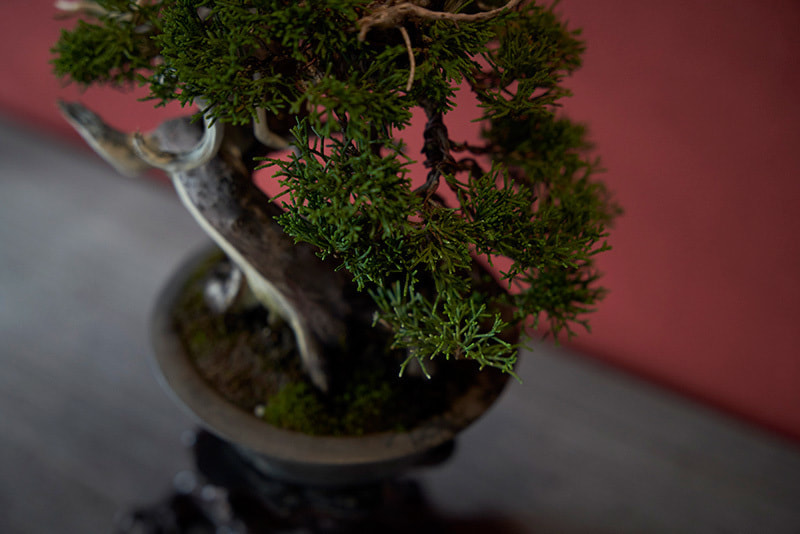
2
When we enter the shop, we are immediately attracted by the place and the beauty of the bonsai on display. It is fascinating to see all these varieties of trees with such harmonious colours and shapes. How would you define bonsai?
Bonsai is the representation of a large tree in a small space. The human hand gives the tree its shape, and it is also this human intervention that will give the tree all its characteristics and reveal all its beauty. In this sense, bonsai is a true art, where the artist expresses his emotions, feelings, and his vision of the world. When I work on a new tree I am inspired by its shape, appearance, and its character, but also by the pot I have chosen and the space in which the bonsai will ultimately be displayed. All of this creates the balance necessary for the work, but also the balance and harmony that every gardener strives for in his work.
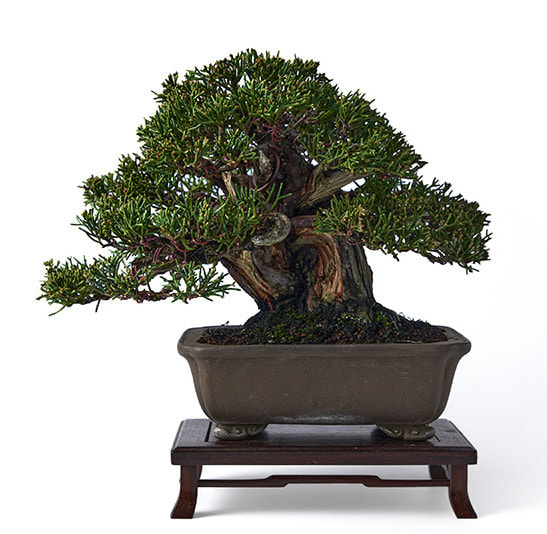
2
When we enter the shop, we are immediately attracted by the place and the beauty of the bonsai on display. It is fascinating to see all these varieties of trees with such harmonious colours and shapes. How would you define bonsai?
Bonsai is the representation of a large tree in a small space. The human hand gives the tree its shape, and it is also this human intervention that will give the tree all its characteristics and reveal all its beauty. In this sense, bonsai is a true art, where the artist expresses his emotions, feelings, and his vision of the world. When I work on a new tree I am inspired by its shape, appearance, and its character, but also by the pot I have chosen and the space in which the bonsai will ultimately be displayed. All of this creates the balance necessary for the work, but also the balance and harmony that every gardener strives for in his work.
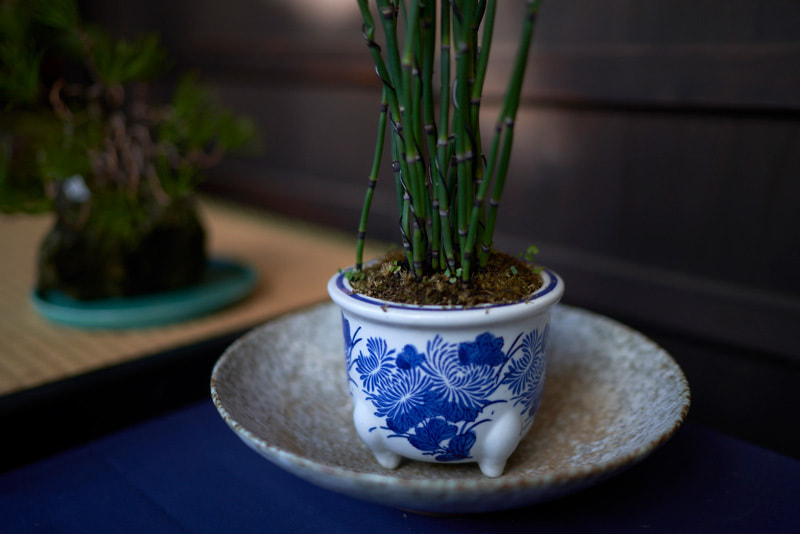
3
Which trees can be used in the confection of a bonsai and what care is needed to keep a tree healthy?
All kinds of trees can be used. There are two main categories of trees, however: evergreen trees such as black pines, red pines, Japanese cedars, and cypresses, which keep their foliage throughout the year, and deciduous trees such as cherry trees, Japanese apricot trees, plum trees, maple trees, and beeches. All can be used and grown in bonsai.
The trees need a lot of attention – in fact, we take care of them. For example, pruning densifies growing branches and prevents them from becoming too thick. The thing that prevents the trees from growing too large is not the act of pruning itself but rather the use of a small pot/container that controls root growth. Fertiliser can be used to manage the tree’s growth and prevent diseases that would weaken it. The process of achieving a healthy, aesthetically pleasing tree that can grow harmoniously is a laborious, patient, daily routine that requires energy and passion.
3
Which trees can be used in the confection of a bonsai and what care is needed to keep a tree healthy?
All kinds of trees can be used. There are two main categories of trees, however: evergreen trees such as black pines, red pines, Japanese cedars, and cypresses, which keep their foliage throughout the year, and deciduous trees such as cherry trees, Japanese apricot trees, plum trees, maple trees, and beeches. All can be used and grown in bonsai.
The trees need a lot of attention – in fact, we take care of them. For example, pruning densifies growing branches and prevents them from becoming too thick. The thing that prevents the trees from growing too large is not the act of pruning itself but rather the use of a small pot/container that controls root growth. Fertiliser can be used to manage the tree’s growth and prevent diseases that would weaken it. The process of achieving a healthy, aesthetically pleasing tree that can grow harmoniously is a laborious, patient, daily routine that requires energy and passion.
4
What is the image of bonsai
in Japan and abroad?
In Japan, bonsai is seen as a luxury item for the elderly. When we think of bonsai, we have an image of something that is difficult to produce, fragile and delicate. However, I think we need to work on creating more affordable and appropriate products that are more aligned with contemporary lifestyles. In other countries, bonsai is very popular among all social classes and generations. In the United States and Canada, for example, there are many associations and clubs open to a diverse public with a passion for bonsai.
The growing interest in the art of bonsai, especially among foreigners, brings new challenges to bonsai masters. Keen to share his passion with as many people as possible, Mr Shimomura is always delighted and pleased to educate international customers, despite the language barrier. Mr Shimomura’s shop is an ideal place for learning and transmission, a place where you will feel very comfortable and at ease as you watch the precise techniques and gestures of the master at work.
4
What is the image of bonsai
in Japan and abroad?
In Japan, bonsai is seen as a luxury item for the elderly. When we think of bonsai, we have an image of something that is difficult to produce, fragile and delicate. However, I think we need to work on creating more affordable and appropriate products that are more aligned with contemporary lifestyles. In other countries, bonsai is very popular among all social classes and generations. In the United States and Canada, for example, there are many associations and clubs open to a diverse public with a passion for bonsai.
The growing interest in the art of bonsai, especially among foreigners, brings new challenges to bonsai masters. Keen to share his passion with as many people as possible, Mr Shimomura is always delighted and pleased to educate international customers, despite the language barrier. Mr Shimomura’s shop is an ideal place for learning and transmission, a place where you will feel very comfortable and at ease as you watch the precise techniques and gestures of the master at work.
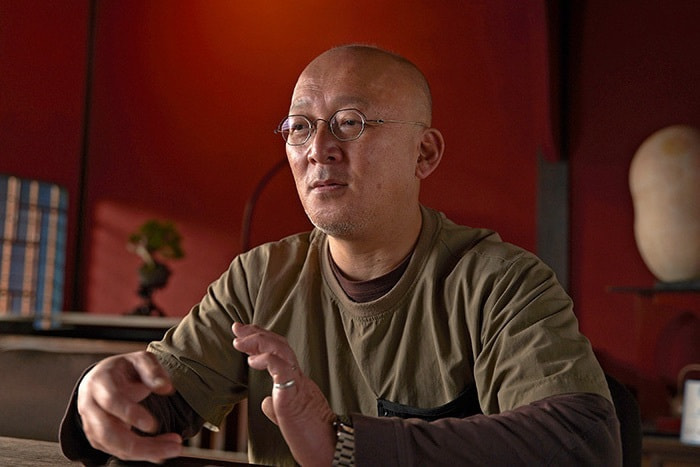
Yoshikatsu Shimomura
Bonsai Master | Owner of Mikunien
Born in 1970, Yoshikatsu Shimomura began his career helping his father who was then running Mikunien. In 2015, the workshop and shop were established at the current address in a traditional Japanese townhouse in the town of Sakai in Fukui Prefecture.
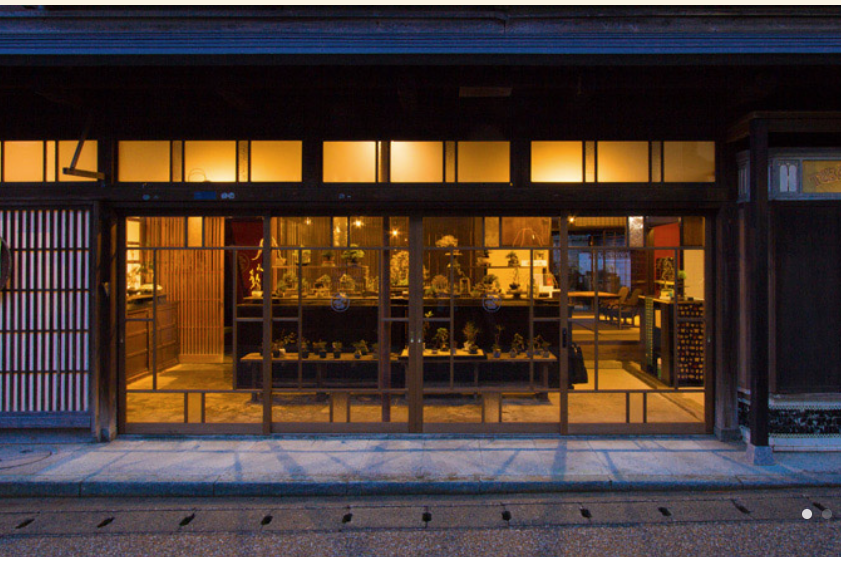
Bonsai Gallery Mikunien
Address: 3 Chome-2-10 Mikunicho Minamihonmachi, Sakai, Fukui
Phone: 077-650-2548
HOURS 10:00-18:00 / Closed Wednesday
https://minato.bonsai-mikunien.com/











